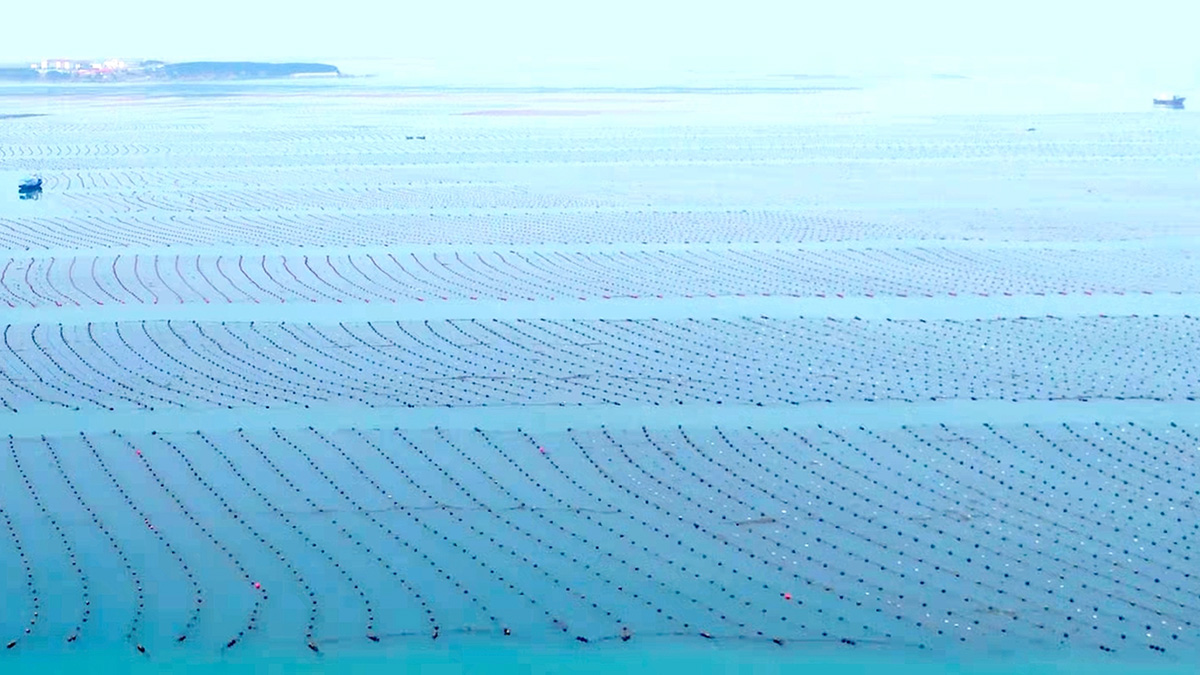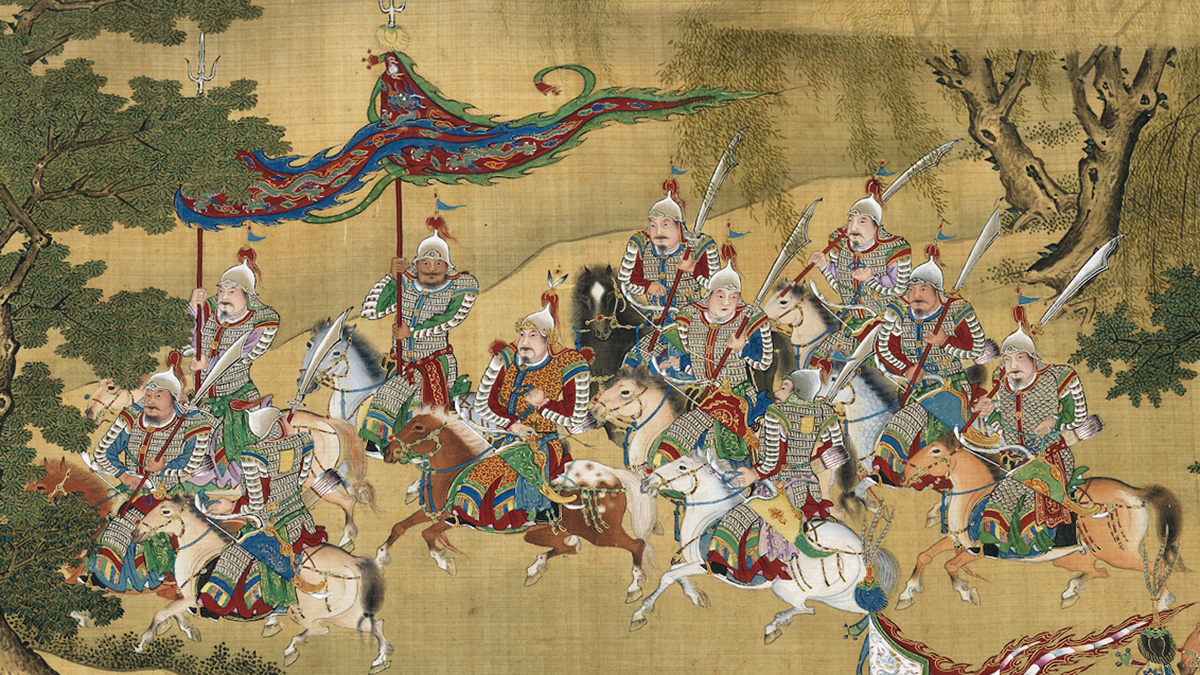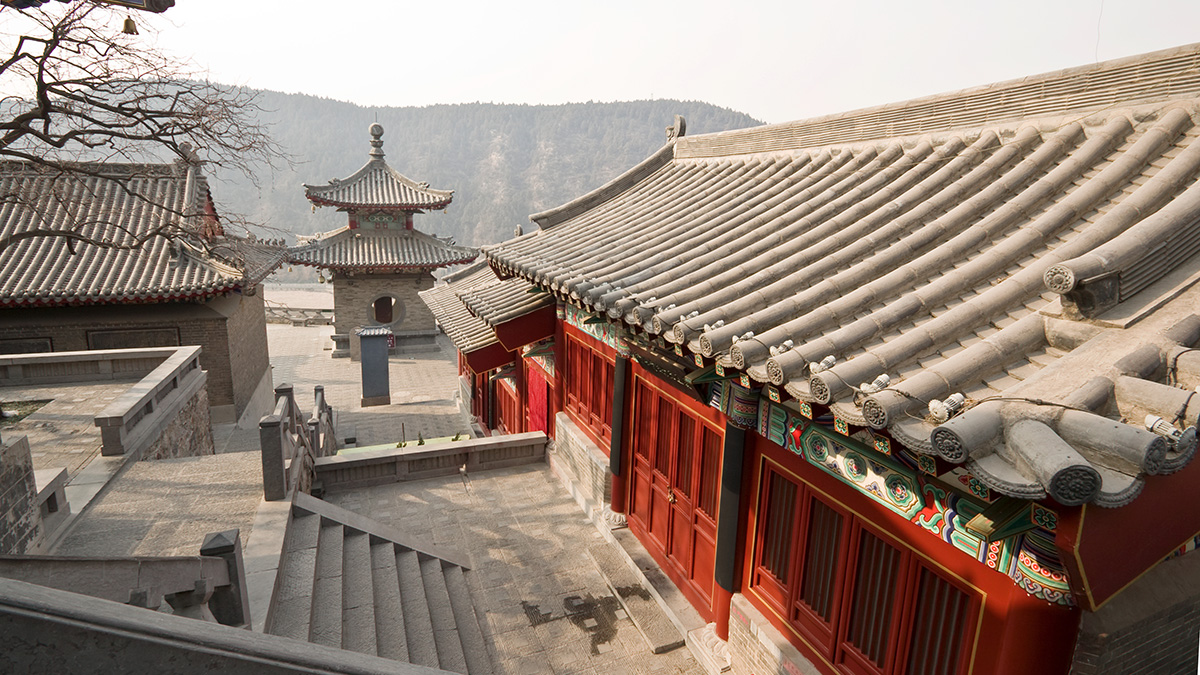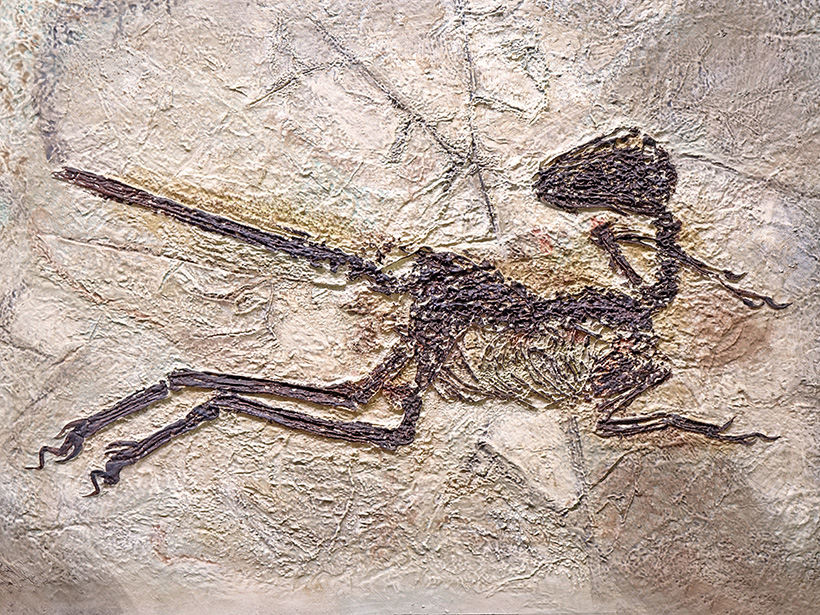Solar wind plasma data captured by the Tianwen-1 probe while in transit to Mars represent an important step toward a new era of cooperative Martian space exploration.
China
Moving Earthquake-Generated Sediment Through a Landscape
Ten years after the Wenchuan earthquake, most of the new sediment it produced remained on the landscape, indicating a long recovery time.
Coastal Aquaculture Can Reduce Nutrient Transport
High-resolution simulations of China’s Sanggou Bay show that suspended aquaculture alters hydrodynamics and weakens transport of nutrients to the area from offshore bottom water.
Lunar Water from China’s Lander Matches Apollo Samples
Chang’e-5’s results are the first in situ measurements of water on the Moon.
Did Volcanoes Accelerate the Fall of Chinese Dynasties?
After analyzing ice cores and historical documents, researchers found a link between eruptions and political change in China over the past 2 millennia.
La arquitectura china evolucionó con los cambios en las nevadas
El diseño de los techos en el norte de China cambió a lo largo de siglos en respuesta a eventos de nieve extremos, sugiere nueva investigación.
Chinese Architecture Evolved with Changes in Snowfall
Roof design in northern China changed over centuries in response to extreme snow events, new research suggests.
Cool Oasis for Cretaceous Feathered Dinosaurs
A new study found that the Jehol Biota had chilly temperatures and high altitudes when feathered dinosaurs roamed the slopes.
Tibetan Plateau Lakes as Heat Flux Hot Spots
Freshwater lakes on the highest plateau in the world act like lenses that accumulate heat from the intense solar radiation, accelerating ice cover melt and affecting land-atmosphere fluxes.










